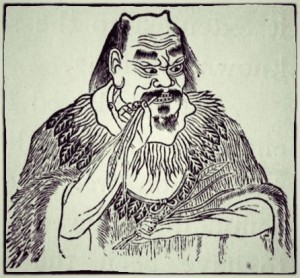Phases of IVF
- Pre-treatment (suppression or down regulation; GnRH)
- Long protocol
- Short protocol
- Ovarian Stimulation
- Final Egg Maturation (trigger)
- Egg Retrieval
- Fertilization in lab if IVF
- Culture Embryos
- Transfer
- Luteal Phase (aka 2 wk wait)
Pre-Treatment: Long GnRH agonist or GnRH antagonist protocol
When: Up tp 4 wks before ovarian stimulation begins or starting on day 21 of the pre-treatment cycle. Weekly.
Main Treatment Points:
- Nourish Yin, clear Heat, regulate Qi, regulate Blood, regulate emotions, harmonize Liver
- LV3, P6, SP6, SP10, Yintang
Modifications:
- Headache:GB20 LI4
- Hot Flashes: KD6, KD2, KD1, HT6
- Insomnia: HT7, P7, anmian
- Fatigue: ST36, huanmen
Pre-Treatment: Short GnRH, GnRH antagonist, Natural unsuppressed
When: Menstrual cycle before ovarian stimulation begins. 1x/week for first 3 weeks, 2x/week during 4th week.
Method: Manual only first for first 3 weeks. E-stim, abdominal points, and heat lamp during late luteal phase when follicular recruitment begins.
Main Treatment Points:
Day 1-5 (menses):
- Invigorate Blood, regulate Qi, tonify KD Jing
- SP4 + PC6, LU7 + KD6, REN4
Day 5-14:
- Nourish Blood and Yin
- SP4 + PC6, LU7 + KD6, LV8, SP6, HT6, KD3
Day 14-16 (ovulation):
- Tonify Jing, regulate Qi and Blood, supplement Yang
- KD1, ST27, REN4, KD3, zigongxue
Day 16 until ovarian stimulation begins:
- SP4 + PC6, LU7 + KD6, zigongxue, REN4, ST36, SP6, ST29
Stener-Victorin Study 1996
Electro-acupuncture treatment prior ovarian stimulation increases blood flow to uterine arteries.
Timing: 2x/week for 4 weeks
Method: Electro-acupuncture
Protocol: Leads placed from UB23 (black) to UB28 (red) and from UB 57 (black) to SP6 (red).
The lumbar points were stimulated at a higher frequency with a lower intensity to the point of mild numbness. The leg points were stimulated at a lower frequency with a higher intensity – enough to contract the calf muscle.
Ovarian Stimulation
Timing: First treatment on day 1-3 of starting stimulation medications. Frequency: 2x/week until trigger injection.
Method :E-stim and manual acupuncture, 25-30 minutes needle retention, TDP lamp or moxa at abdomen.
Main Treatment Points:
- LU7 + KD6, SP4 +P6, zigongxue, REN4, ST36, SP6, ST29, REN3, KD3, UB23, yintang
Modifications:
- Qi Stagnation: LV3, P6, ST30, HT5
- Blood Stasis: SP10, SP8, KD14
- Heat or Fire: LV2, P7, TH5
- Cold: ST28, REN8 moxa
- Blood Deficiency: LV8, ST25, HT6
- Qi Deficiency: ST27, LU9, SP3
- Kidney Jing Deficiency: KD12, ST27, UB52, moxa
- Kidney Yang Deficiency: KD2, DU4, moxa
- Shen Disturbance: HT5, HT6, DU24
- Kidney Yin Deficiency: KD1, HT7
- Electroacupuncture on BL23 and BL28 (100Hz, pulses of 0.5 ms duration) and SP6 and UB57 (2Hz, Pulses of 0.5 ms ). Protocol increases uterine artery blood flow.
- Electro-acupuncture from zigongxue (red) to SP6 (black). Use low frequency (2-10hz) as high frequency (80hz) can decrease blood flow. Additional blood moving point SP10.
Medical Condition Modifications:
- Advanced age, low ovarian reserve, poor response to stimulation: tonify KD Jing, Yin, and Blood; ST27, KD12, KD13, HT6, treat every 2-3 days
- Thin uterine lining: nourish Yin and Blood; UB23, UB17, UB18, HT7 moxa
- OHSS, high estrogen: regulate Qi, fluids, and Blood; REN9, SP9, SP7, LV5
- PCOS: drain Dampness; GB26, ST28, tituo
- Hypothyroid: Tonify Qi and Yang; KD4, REN17, SP3, UB20 moxa
- Hyperthyroid: Clear Heat, nourish Blood; UB21, UB15, UB17, UB18
- Endometriosis: Regulate Chong, Ren, Qi and Blood; KD5, ST26, REN2, LV14, LV1
- Reproductive Immune Issues: Regulate Chong, Ren, tonify and regulate Qi, Blood, and Yin; SP4, LU7, SP6, ST36, REN4, LV3, SP10
- Clotting Disorders: Regulate Blood; KD14, LV14, SP10
Trigger
Optional Tx on day between injection and retrieval OR Ear tacs to be removed prior to retrieval
Rx: E-Stem* + Heat: SP4 P6, Zigong* St29* Sp10, Sp6, St36, Lv8 R4 Sj5, Yintang Egg Retrieval: Acu Analgesia
Auricular Tx Uterus, SM, Occiput use tac needle or e-stem (E-stem, Biegler GmbH)
Transfer: Day of or within 24hrs of transfer
Paulus Method: 25min prior; P6, Sp8, Lv3, Du20, St29, LT
25min after; St36,Sp6, Sp10, Li4
Ear: Left- SM, Zigong, Right- Neifenmi, Naodian (switch after transfer to alternate ear points)
Dieterle: 30min AFTER; R4, R6, St29Sp10, Sp8, Ear: SM, ZG, Neifenmi, Pizhixia Omodei: 25min before YT, LI4, ST36, SP6, LV3
25min After: EAR- SM, Uterus, KD, HT
Other Rx BEFORE: Sp4, Pc, LI4, R4, SP6, ST36, SP10, Zigong, ST29, YT Other RX AFTER: R4, R6, K7, ST36, Du20
Modify according to underlying presentation .
Luteal Phase:
Tx 1: 4-8 days post retrival
Tx2 : Midway b/t Tx1 and Hcg test
Rx: Reinforce yang, nourish blood, tonify SP and KD, Calm Shen, Prevent miscarriage
K3, K7, St36, R4,R6, Du20 Yintang, MOXA
GnRH Agonist
A GnRH agonist stimulates the pituitary to produce more LH and FSH, which causes and increase in estrogen levels. After 10 days, gonadotropic pituitary cells are exhausted, resulting in pituitary suppression. Gonadotropin ovarian stimulation begins after pituitary suppression is confirmed by baseline evaluation. Common GnRH medications include buserelin injection and nafarelin nasal spray.
- Long Protocol: Starts mid-luteal phase of the pretreatment cycle, with ovarian stimulation beginning up to 4 weeks later. Often referred to as ‘downregulation’ or ‘suppression’.
- Short Protocol: A GnRH agonist is administered from day 2 or 3 of the menstrual cycle once baseline confirms a thin endometrial lining and ‘quiet’ ovaries.
GnRH Antagonist
A GnRH antagonist is typically started on day 5-6 of ovarian stimulation, with no down-regulation period. The antagonist binds to the GnRH receptors in the pituitary gland, suppressing immediately. Common GnRH antagonists include cetrorelix (Cetrotide) and ganirelix (Orgalutran) injections.

